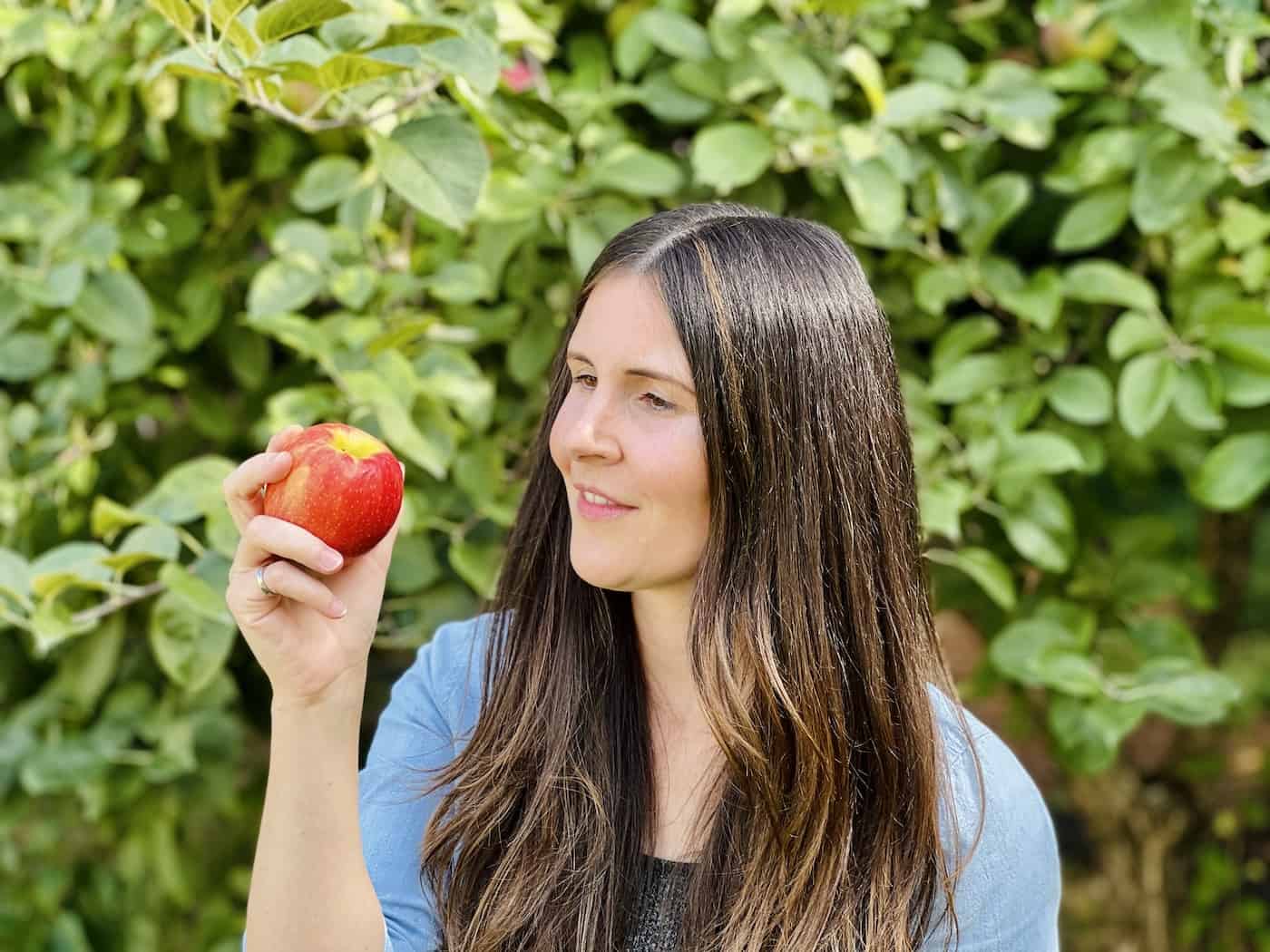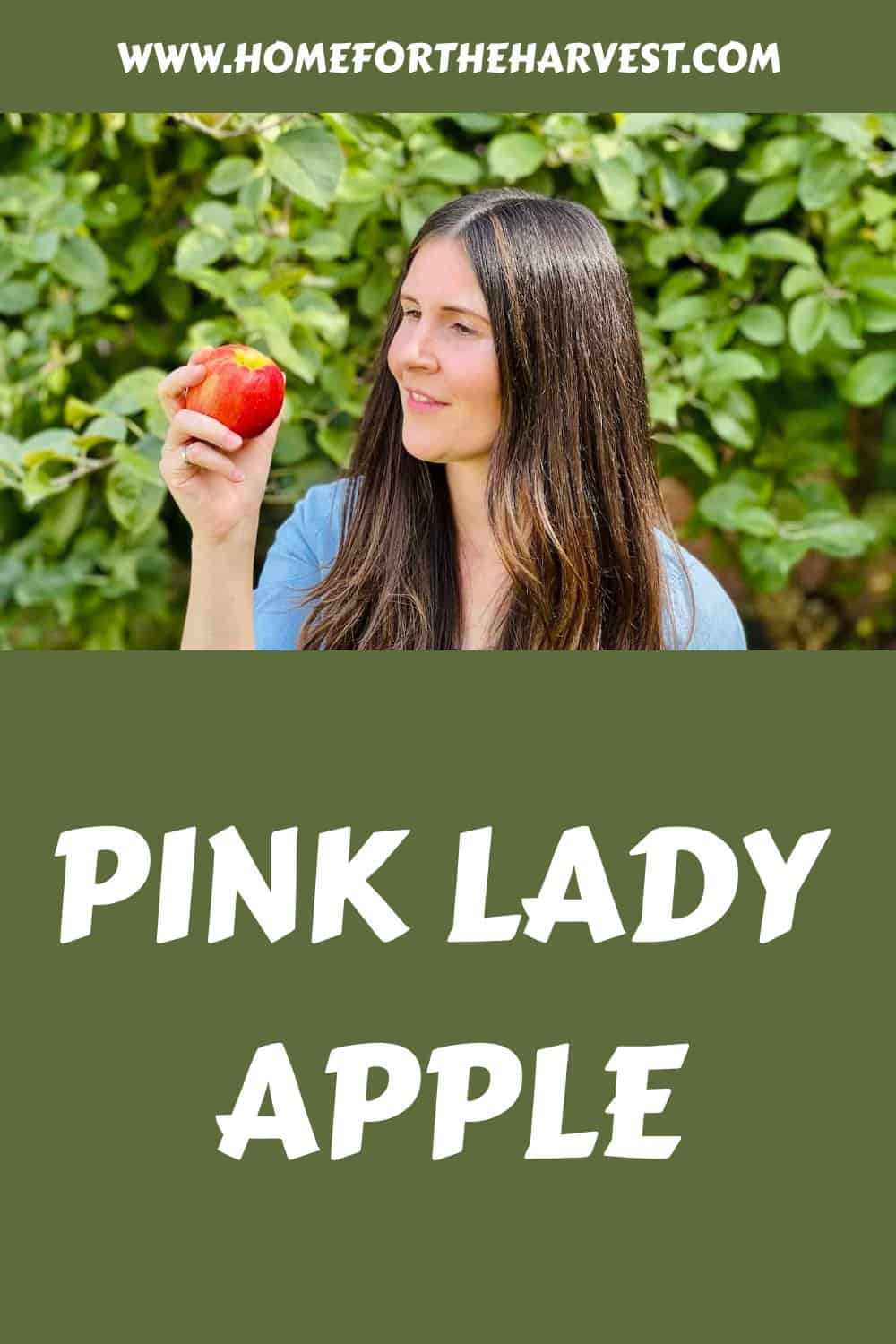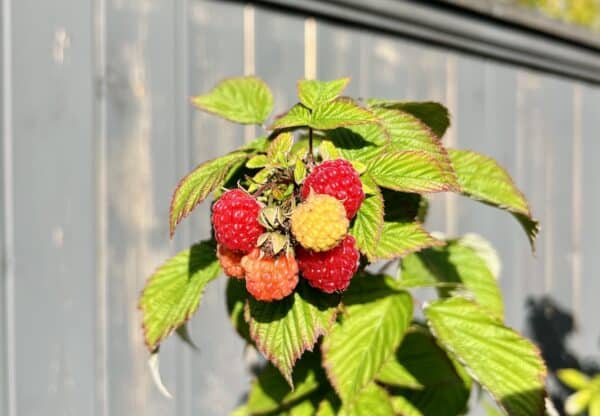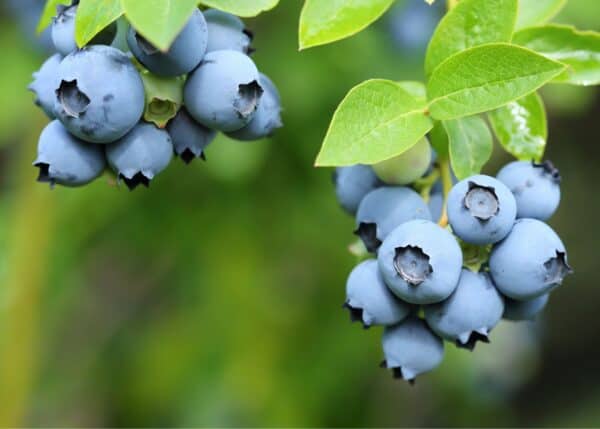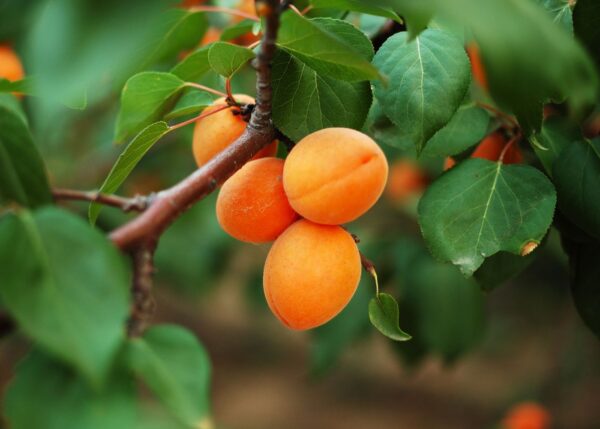Pink Lady® is a specialty brand of apples that offers the very best fruits of the Cripps Pink variety. Pink Lady apples are known for their distinctive rosy blush coloring on an otherwise green peel and their balanced sweet-tart flavor and crunchy fresh texture. These apples are perfect for eating fresh, baking into pies or tarts, and making beautiful homemade applesauce.
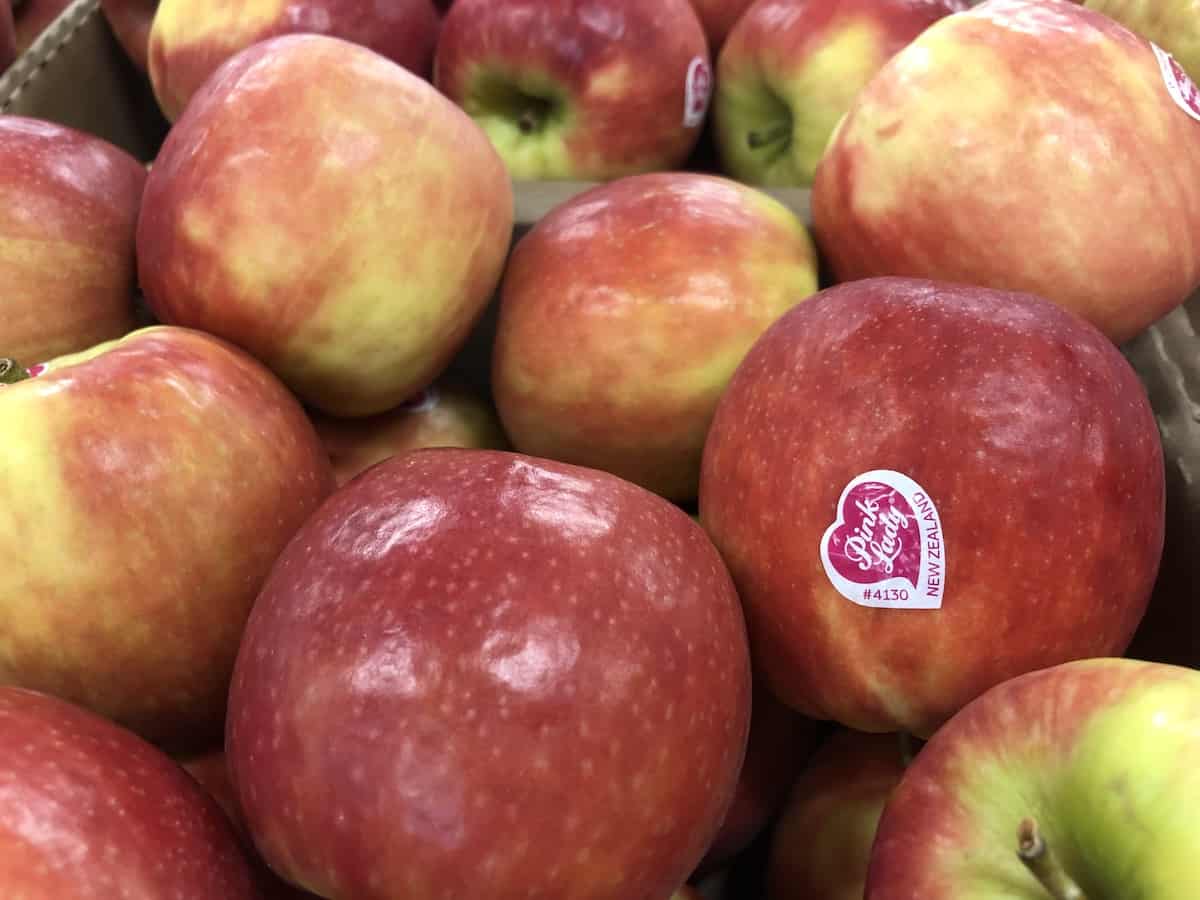
Pink Lady® apple basics
Pink Lady® apples were bred in Western Australia in the 1970s by British-Australian horticulturist John Cripps. He bred a series of seedling trees as part of the local Department of Agriculture breeding program, with Golden Delicious and Lady Williams as parent varieties.
The best of the seedling trees was selected from the batch and was called Cripps Pink. Western Australia Agriculture and Food Department filed the US patent for the Cripps Pink variety of apples in 1990. Pink Lady® apples are the best fruits of Cripps Pink trees.
While Pink Lady apples were originally only of the ‘Cripps Pink’ cultivar, there are now a few different cultivars sold under the Pink Lady brand name. Newer apples sold as Pink Lady include ‘Ruby Pink’, ‘Rosy Glow’, ‘Lady in Red’, and ‘Barnsby’.
Pink Lady apples were bred with natural, centuries-old cross-breeding techniques. They are not genetically modified (they are not GMO).
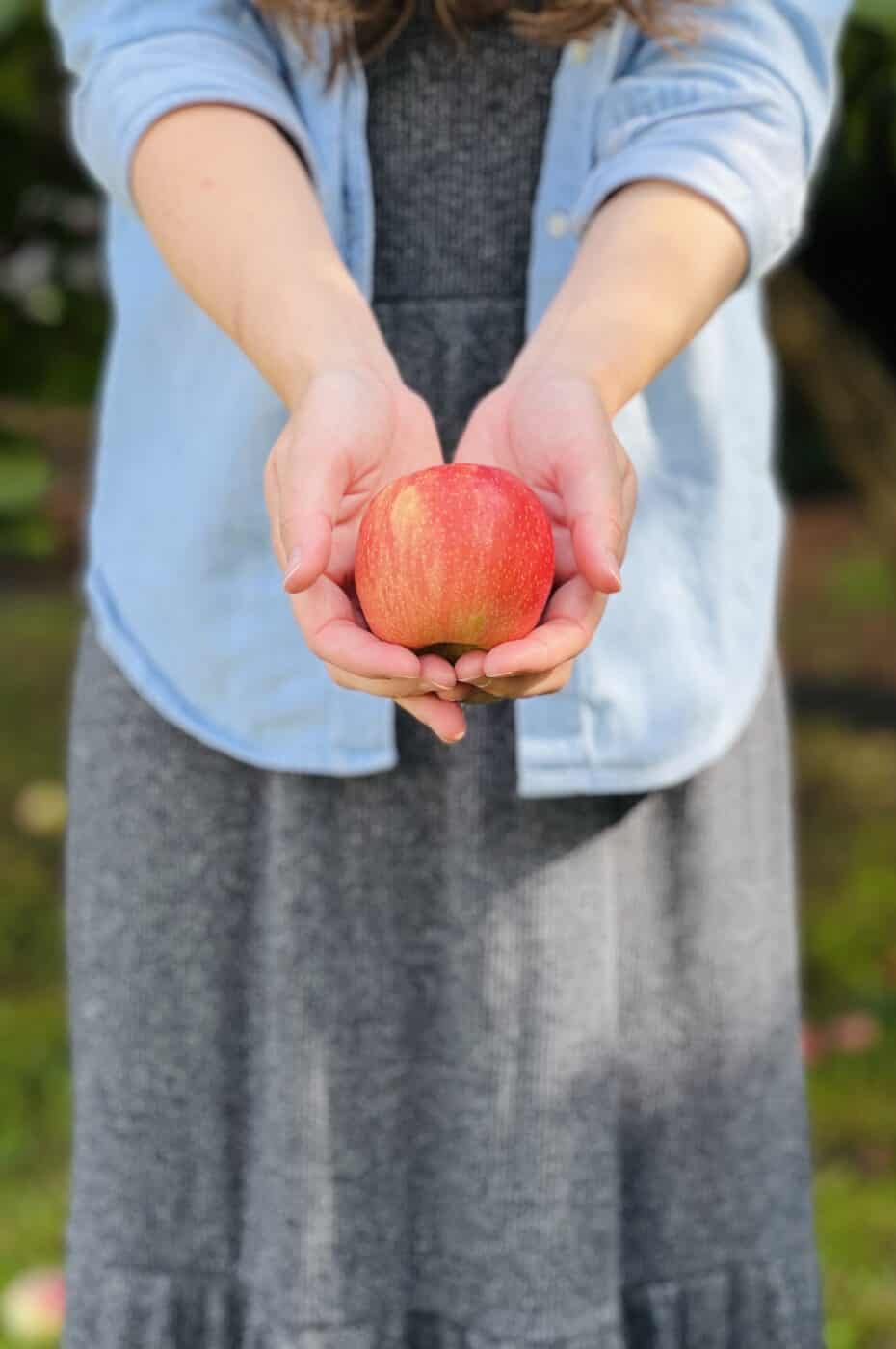
The Pink Lady® brand
The Pink Lady® brand, owned by Apple and Pear Australia Ltd., markets the pick of the crop for sale at grocery stores. These apples are the highest quality fruits from licensed orchards growing the Cripps Pink variety (as well as certain approved related cultivars). Quality is determined by lack of blemishes/bruises, firmness, peel color, and sugar content.
Here are some links to the Pink Lady® brand around the web:
- Pink Lady® Global: https://pinkladyapples.com/
- Pink Lady® USA: https://pinkladyamerica.org/
- Pink Lady® UK: https://www.pinkladyapples.co.uk/
- Pink Lady® Europe: https://www.apple-pinklady.com/
Cripps Pink vs Pink Lady
Cripps Pink and Pink Lady apples are usually the same genetic variety. Cripps Pink apples from licensed growers must meet a high-quality standard to be selected as Pink Lady® apples. Years ago, all Pink Lady® apples were Cripps Pink variety apples.
Pink Lady® apples are chosen from the standard Cripps Pink cultivar (cultivated variety), as well as certain approved naturally occurring genetic strains of Cripps Pink. In addition to Cripps, later-blooming cultivars like ‘Ruby Pink’ and ‘Barnsby’ are also now sold as Pink Lady apples.
The licensed supply chain allows for excellent quality control, with only the best fruit getting the heart-shaped sticker. Not all Cripps Pink fruits are eligible to be marketed as Pink Lady, especially if they have less-than-optimal firmness, flavor, or appearance.
“In Australia in 1973, the inspired researcher John Cripps had the delectable idea of naturally crossing a Golden Delicious with a Lady Williams. This alliance led to the creation of a new variety, the Cripps Pink. Pink Lady® apples are the selection of the best apples of that variety.”
Pink Lady®
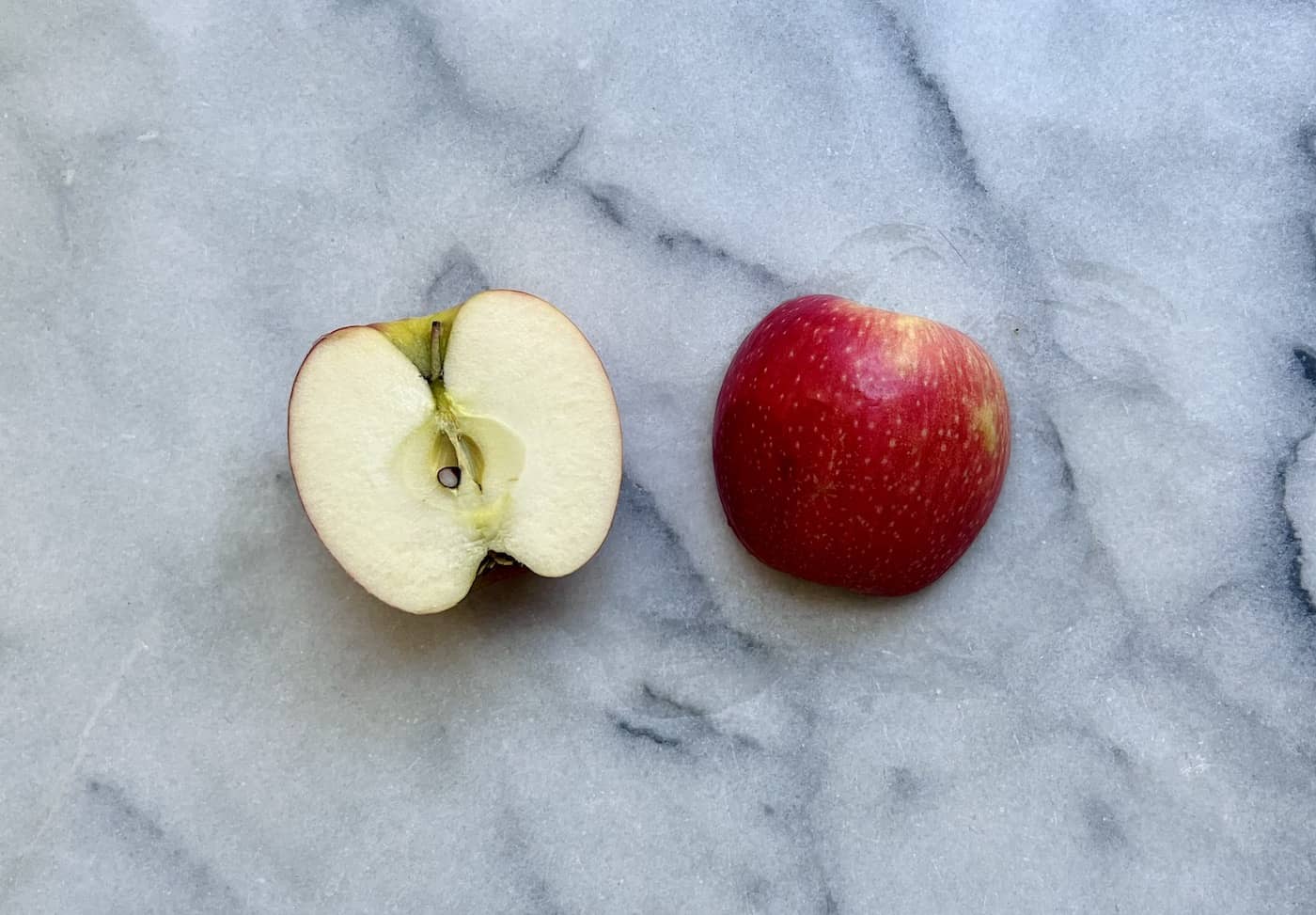
Flavor profile
Pink Lady® apples have a distinct, balanced sweet-tart flavor. It has subtle and complex notes of sweet honey offset with a hint of citrus and spice. When perfectly ripe, Pink Lady apples have floral aromatics reminiscent of vanilla and rose. These apples really are sugar, spice, and everything nice!
The flesh of Cripps Pink apples is crisp, juicy, and so firm it’s almost crunchy. These apples are somewhat more acidic than most grocery store varieties, giving them almost an effervescent fizz. The flesh resists browning after being cut, making Pink Lady apples a great choice for appetizer trays and other fresh applications. Pink Lady is a great choice for a sweet apple variety that’s also complex and interesting.
“Flavor: Sweet, tropical, and nicely tart. Texture: The queen of juice. Very crisp. Pink Lady doesn’t quite dissolve like Honeycrisp and the other modern apples; it’s more substantial, and the skin is notably thicker.”
Apples Of Uncommon Character: 123 Heirlooms, Modern Classics, & Little-Known Wonders, by Rowan Jacobsen
True apple connoisseurs may enjoy comparing the flavor of a perfectly ripe Cripps Pink apple right off the tree with an aged apple that has spent a month in storage. The fruit’s flavor does change over time, generally peaking after several weeks in cold storage. Complexity in taste is most easily observed when the apples are at room temperature.
Growing regions
Pink Lady/Cripps Pink Apples are grown in warm apple-growing climates around the world. A high volume is grown in their native Australia, while Northern Hemisphere production is also significant. Here are some of the countries where Cripps Pink Apples are grown:
- Australia
- New Zealand
- USA (Washington, California, North Carolina)
- Canada (British Columbia, Nova Scotia)
- Argentina
- Chile
- Brazil
- South Africa
- Italy
- France
The Cripps Pink apple variety can only be grown in regions with long growing seasons. They need an early spring, a long hot summer, a crisp autumn, and a cold (but not too long) winter. Growers for Pink Lady® apples have been licensed all around the world, resulting in year-round supply availability.
Temperature conditions are not only important for blossom survival and ripening period length but also for peel color. The color of the peel will become a more intense rosy blush color if there is a wide variation in the daytime and nighttime temperatures in the fall. Here’s to warm September days and crisp autumn nights!
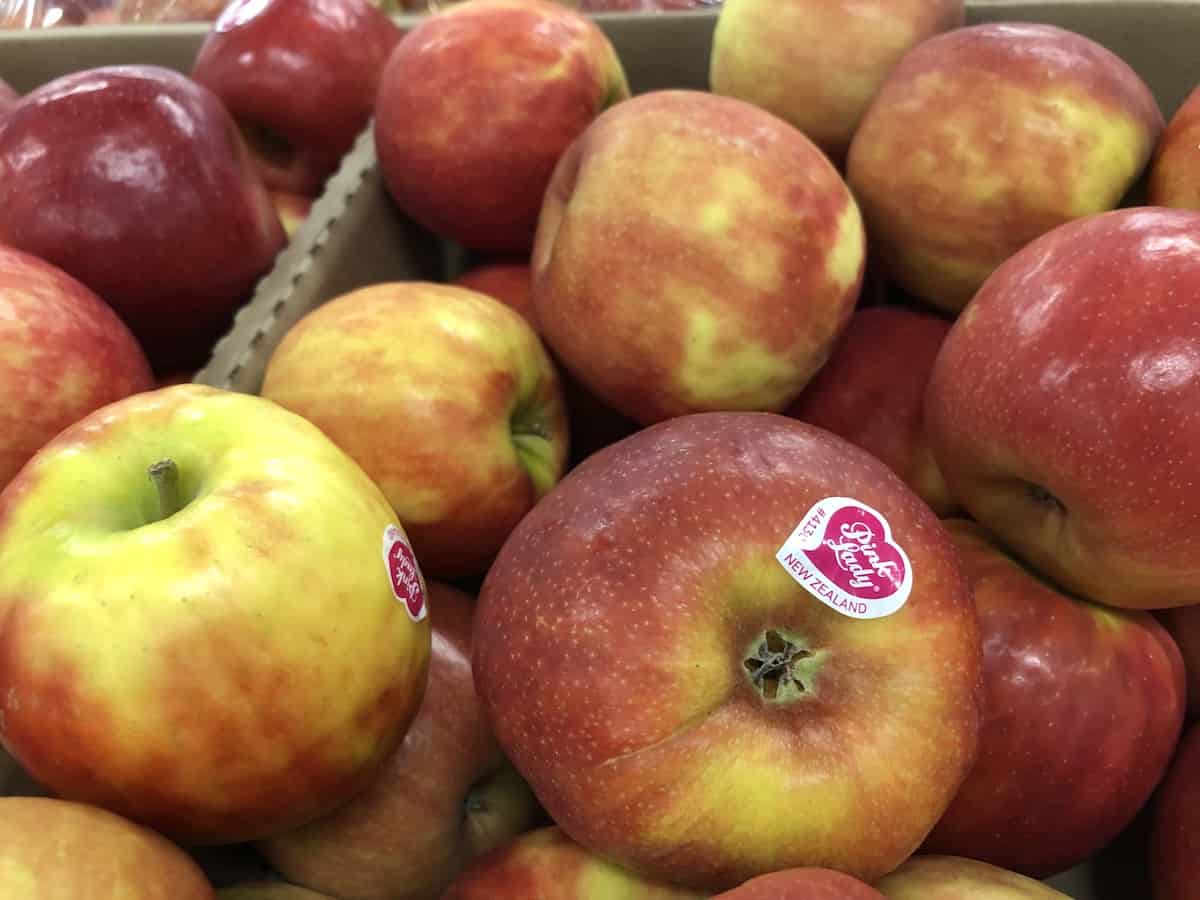
Harvest season
Harvest season for Pink Lady® Apples occurs in late autumn. Here are the months when these apples ripen in various countries around the world:
- USA: October-November
- Canada: November-December
- Australia: April-May
- Argentina: May-June
- Chile: May-July
- New Zealand: June-July
Pink Lady® Apples are in season year-round due to their worldwide production. They are only grown in regions with a long growing season, as they take 6 months to grow on the tree! Cripps Pink trees are blossoming in the southern hemisphere just as the apples are getting their ripe rosy-pink color in the northern hemisphere.
Cripps Pink is often the last apple variety to be harvested, a few weeks after Fuji apples and even Granny Smith apples! Several naturally occurring strains of Cripps Pink (Barnsby, Maslin) tend to mature a week or two earlier than the standard trees, allowing for earlier harvest in areas with early winter freezes.
How to grow Cripps Pink apples
Cripps Pink apples are among the more difficult to grow at home, but also the most rewarding! These trees thrive in mild, temperate areas with a long growing season. Cripps Pink trees can be planted in USDA Zones 6-9.
Cripps Pink trees have a medium-low winter chilling requirement, at about 500-700 hours, where temperatures are just above freezing. While they do need this cold period in dormancy, it’s also important that they’re grown in areas with early, frost-free springs, and late, freeze-free autumns. The fruit has a very long maturation period in comparison to other varieties.
Pink Lady apple trees cannot be grown from seed. A seed from a Cripps Pink apple that grows into a fruit-bearing apple tree will produce genetically unique fruit from its parent, as the seed was pollinated by a different variety. You’ll need to buy a grafted tree from a nursery to get true Cripps Pink apples.
Plant your Pink Lady/Cripps Pink apple tree in a sunny spot where it can get at least 6 hours of sunlight per day. Dig a wide planting hole that is only as deep as the soil in the tree planter pot. Gently place the tree’s root ball in the hole and carefully backfill with the soil that came out of the hole. Water the tree deeply and apply an organic mulch to the soil around the tree (without actually touching the bark itself).
“Fruit trees have been grafted for thousands of years and records of grafted trees go back as far as ancient Rome.”
Growing Urban Orchards: How to Care for Fruit Trees in the City and Beyond, by Susan Poizner
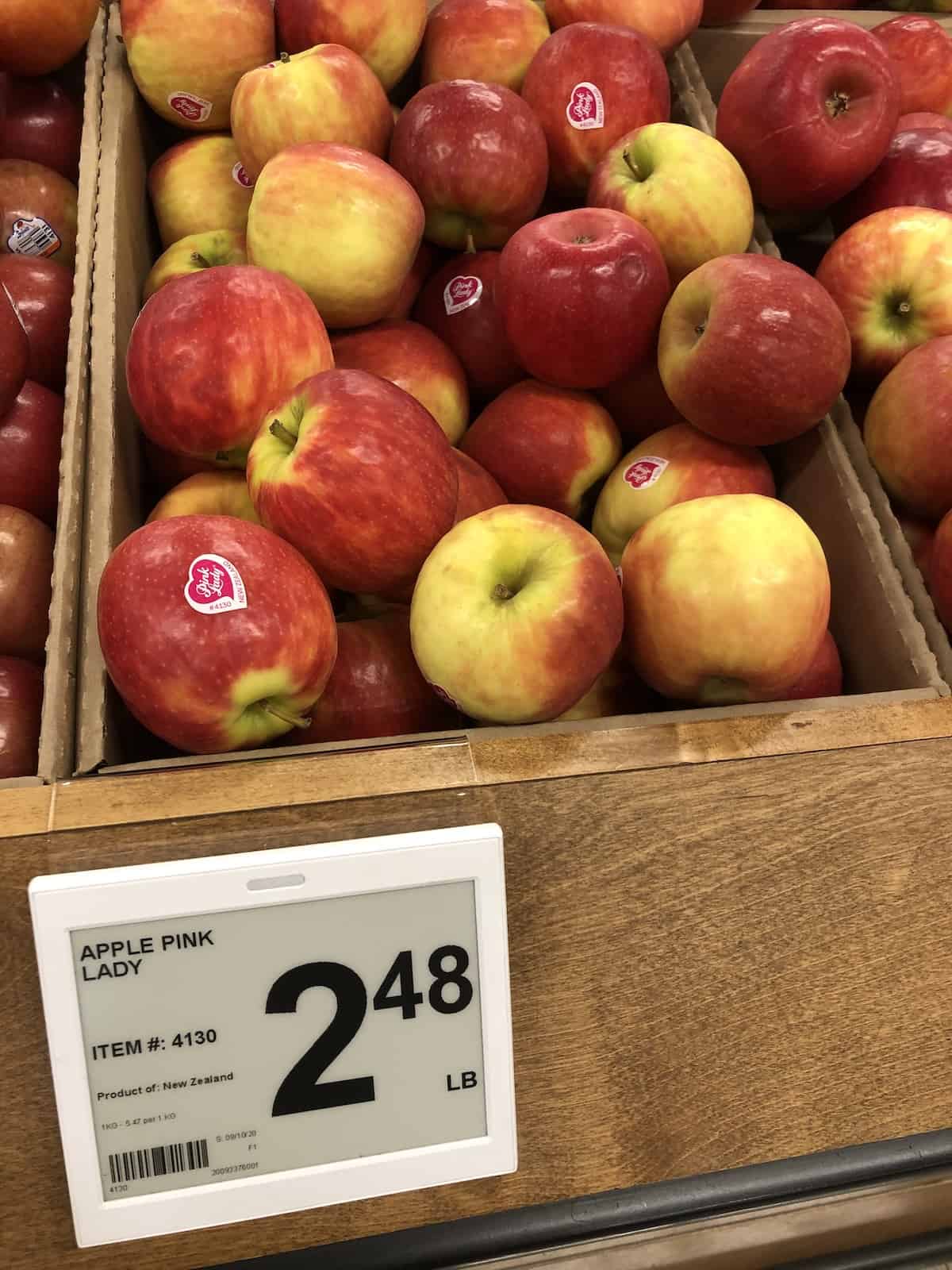
Tips for buying Pink Lady® apples
Pink Lady® apples are sold in supermarkets and specialty grocery stores all around the world, including Kroger, Walmart, and Target. Look for the distinctive pink, heart-shaped logo (see photo above). If licensed Pink Lady brand apples are not available, look for the Cripps Pink variety (all Pink Lady® apples are of the Cripps Pink variety).
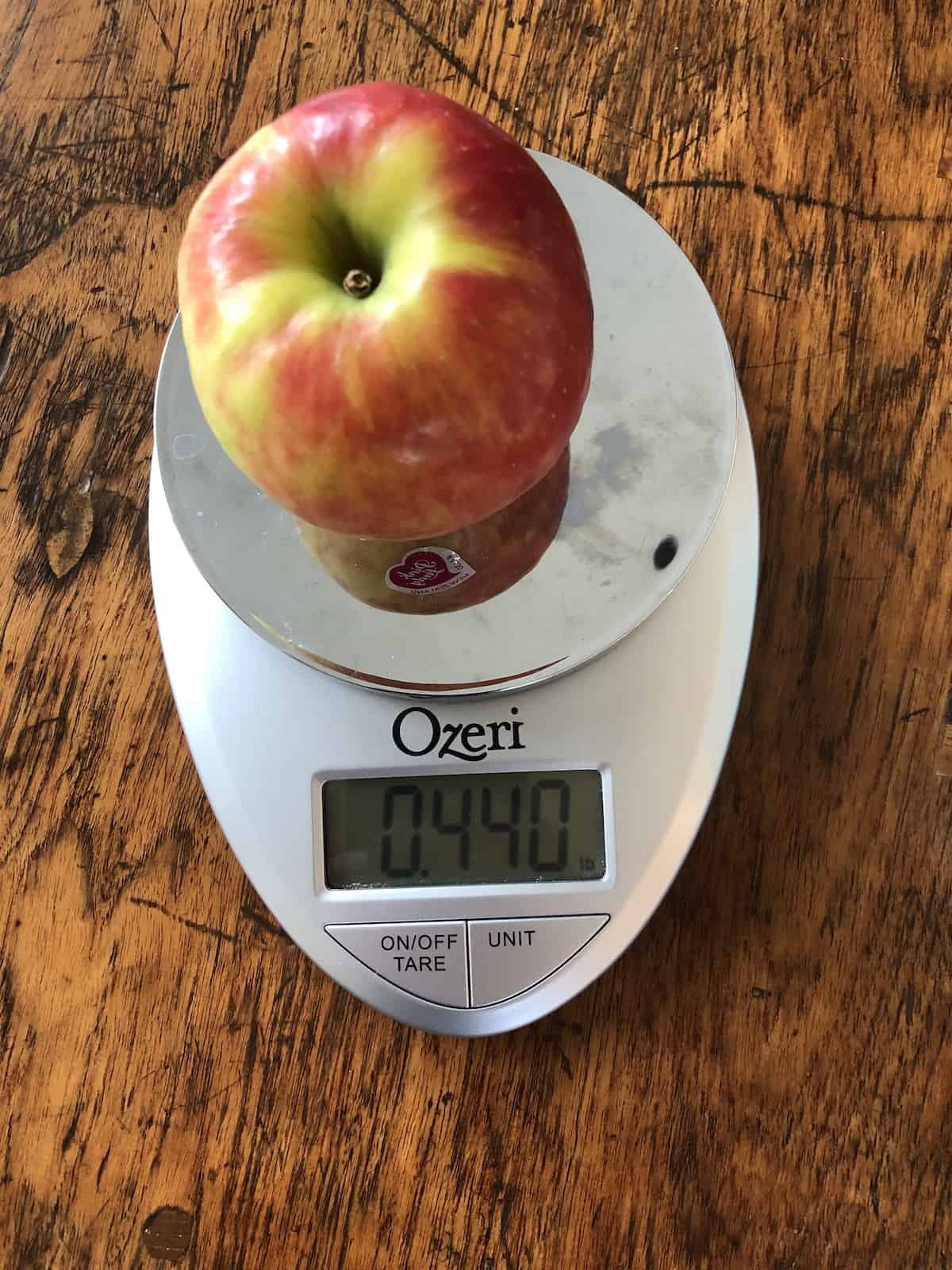
Pink Lady® apples often weigh 0.3-0.45 lbs each (130-200 g). There are 3 average-sized Pink Lady apples in a pound. At the grocery store, Pink Lady® apples generally cost about $2.50 per pound. An individual apple may cost $1-$2 at a take-out counter.
Pink Lady® apples and other premium club cultivars often cost as much as twice as much as non-club supermarket varieties. This is because they are attractive, unique in taste, difficult to grow, require a very long growing season, have a quality-controlled supply chain through brand licensing, and are supported by ongoing worldwide marketing.
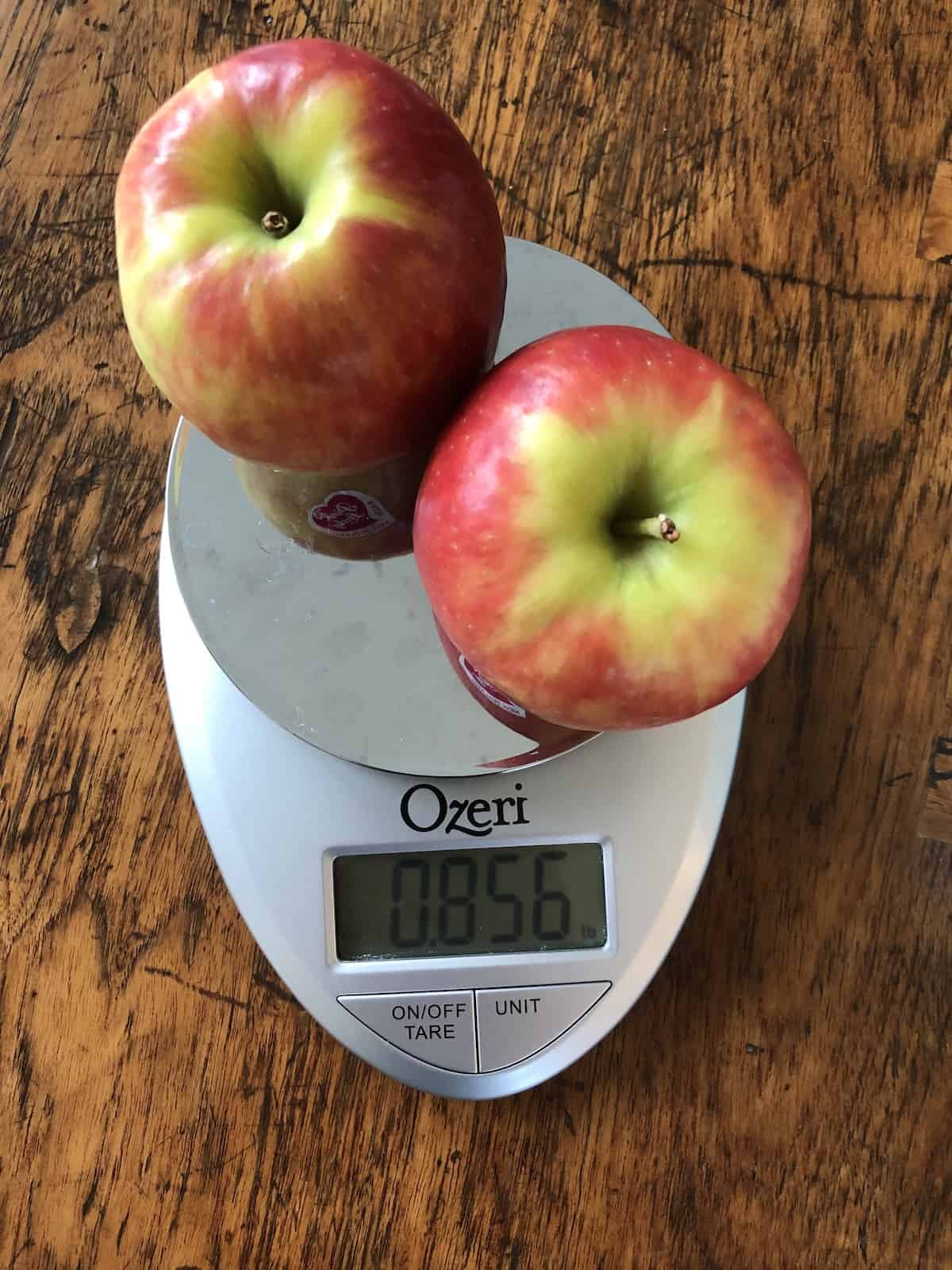
Long-term storage
Pink Lady® apples are excellent for long-term storage, and can be stored in the refrigerator for 3 months! A month of cold storage can help their full flavor develop, making them even more delicious than when they were first harvested. Cripps Pink store even longer in commercial cold storage, extending their availability for 6-8 months beyond harvest.
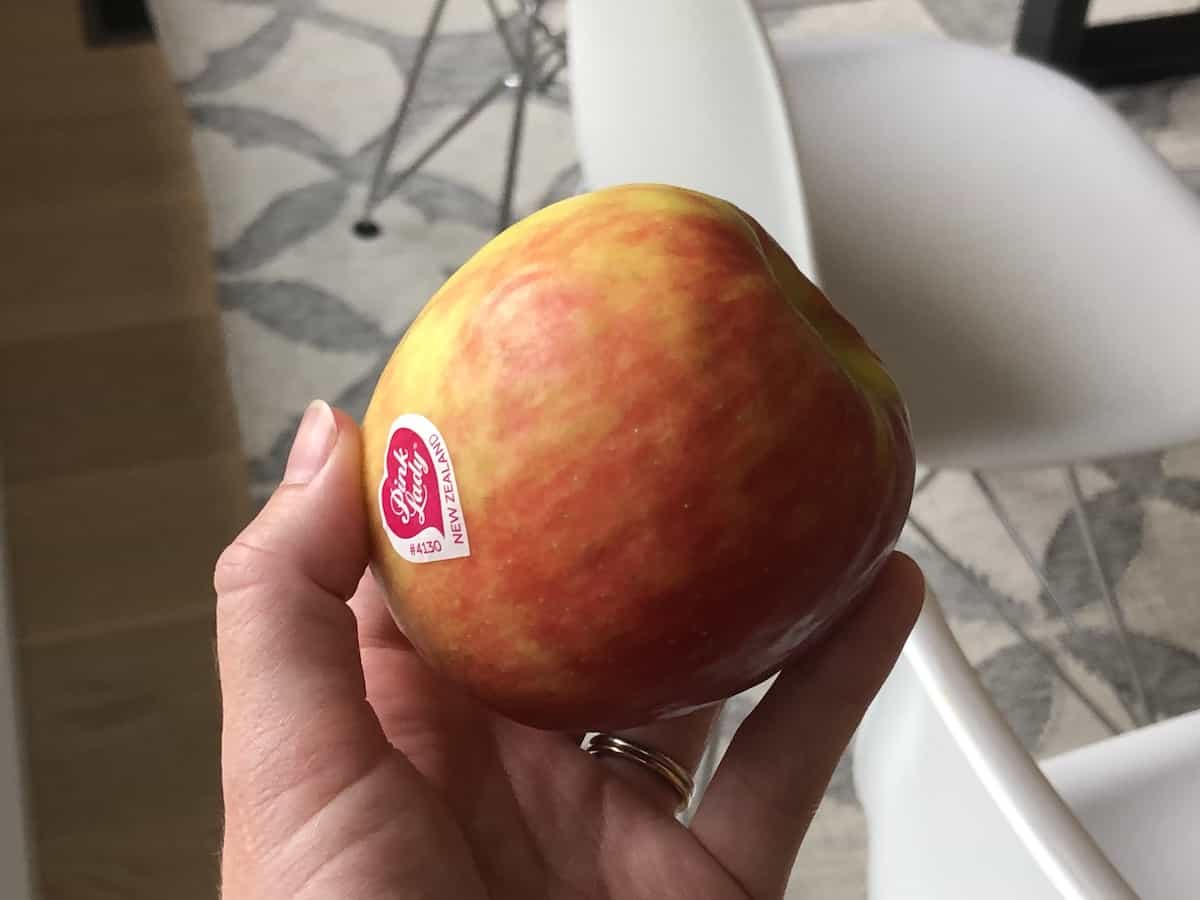
Recipes
Pink Lady® Apples are great for making fresh appetizer plates, homemade applesauce, and even yummy apple pies! They’re slow to brown, hold their texture when cooked, and have a wonderfully balanced flavor. Here are some ideas for what to make with Cripps Pink/Pink Lady apples.
Pink Lady® apple recipes
Here are some Pink Lady Apple recipes:
- Ultimate Pink Lady® Apple Pie
- No-Sugar Homemade Pink Applesauce
- Apple & Caramel Tiramisu-in-a-Jar
- Pink Lady® Apple, Cheddar, & Prosciutto Flatbread
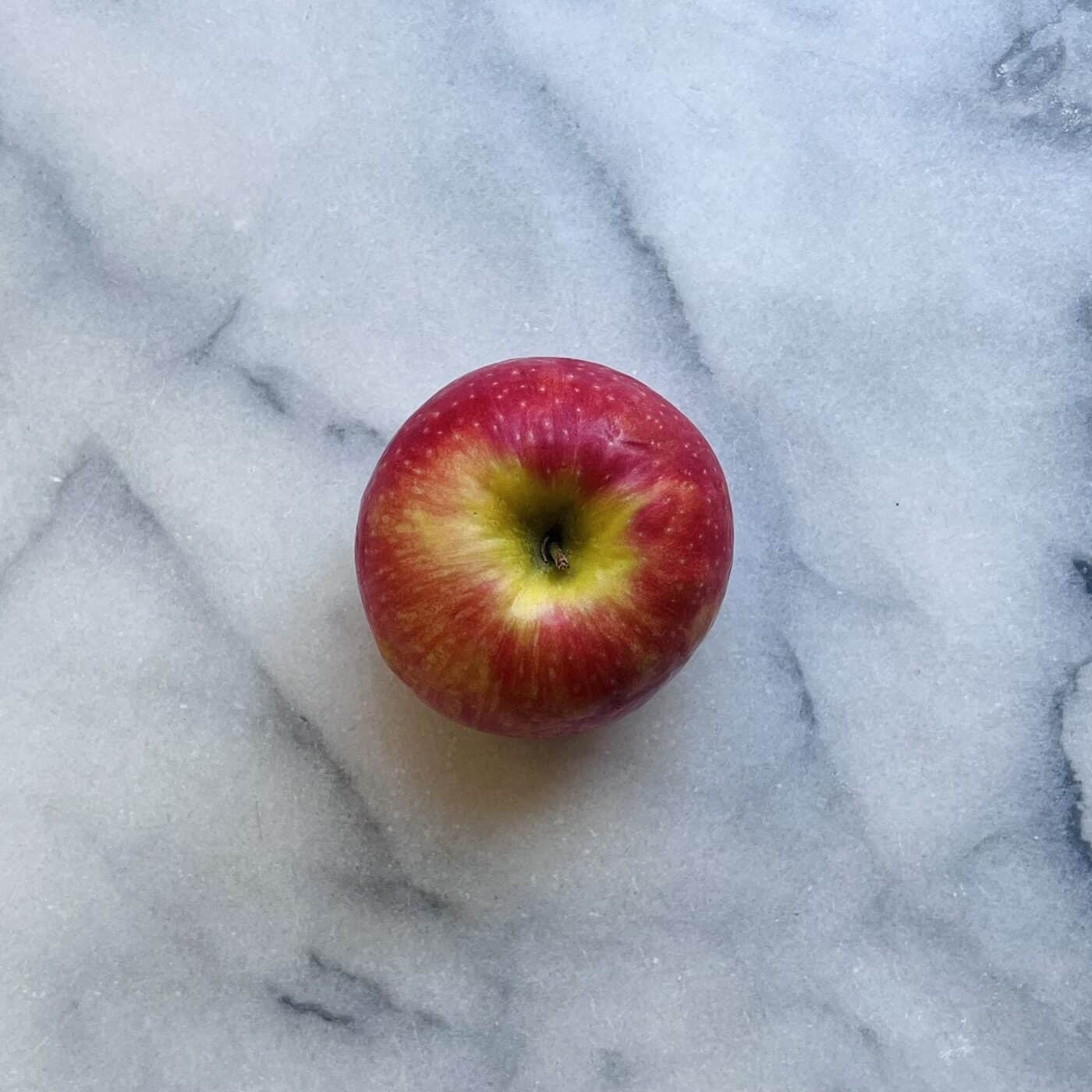
Baking with Pink Lady® apples
Pink lady Apples are great for baking, as they have a nice balanced sweet-tart flavor. Their flesh softens when baked, without becoming overly mushy. Like their parent Golden Delicious, Cripps Pink is an excellent cooking apple, particularly if only one apple type is to be used.
Substitutes for Pink Lady® apples
There are several excellent substitutes for Pink Lady Apples. For a similar fresh apple, try Honeycrisp, Ambrosia, Fuji, or Royal Gala. For baking, try Golden Delicious, Braeburn, or Gala.


